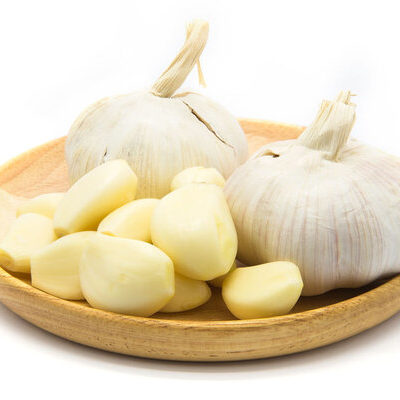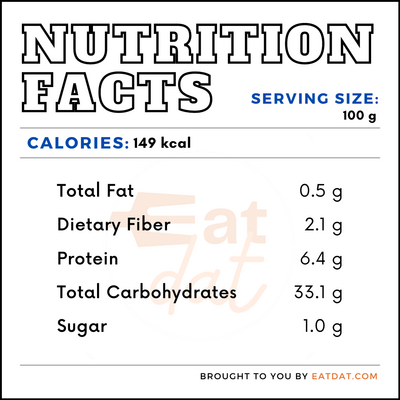
Garlic
What is Garlic?
Garlic is an herb that is closely related to onions, leeks, and shallots. It is typically used for seasoning in different cuisines around the world due to its strong flavor and aroma. It grows as an underground plant in the form of a bulb, which is covered with an inedible skin. A bulb comprises several cloves, which are individually peeled to get at the edible section within.
- There are close to 600 different varieties of it grown around the world.
- This food is even available in different forms: fresh, minced, dried flakes, and powdered.
The most popular garlic powder brands on the market are:
- McCormick
- McCormick Organic
- Spice Hunter Organic
- Frontier Co-op Organic
- Chef Merito
- Spice Islands
- Burlap & Barrel
- Morton & Bassett
- Lawry’s
Origin of garlic
This has been consumed by humans for at least 6,000 years. It was originally cultivated in Central Asia in the regions of modern-day China, Kazakhstan, and Kyrgyzstan. Although another school of thought attributes its origin to Mesopotamia, and credits Sumerians with bringing this food to China. From China, the herb spread to other ancient civilizations, such as those in India and Egypt, where it was also used as a medicine. However, in Japan and India, Buddhist, Hindu, and Jain traditions prohibited the consumption of this food for the most devout. Furthermore, ancient Greeks prohibited garlic eaters from entering temples. Later on, this food was introduced to Arab countries in the Middle Ages and to Europe in the 1500s, immediately becoming popular.
Nutrition
Garlic is rich in fiber, proteins, and fats. A 100 g serving contains:

It also contains omega-3 and omega-6 fatty acids, which are essential for physical and mental development. Additionally, it has good amounts of vitamin C and B vitamins, such as thiamin, vitamin B6, riboflavin, and pantothenic acid, as well as minerals like calcium, iron, magnesium, phosphorous, potassium, zinc, copper, manganese, and selenium. Regular consumption of it may help reduce blood pressure and cholesterol, prevent atherosclerosis, and increase blood flow.
Also, it has properties that may both prevent and treat cardiovascular diseases. This food might also prevent cancer cell proliferation and keep blood sugar in check. Not to mention, it can protect the liver from toxic substances. It may help combat infectious diseases caused by bacteria due to the presence of allicin. Plus, it has antifungal and anti-viral properties, making it an effective treatment and prevention against the common cold. However, patients taking anticoagulants must be careful of how much of this food they consume.
Commercial production
The main producers of this food are China, India, Bangladesh, Egypt, South Korea, Russia, Myanmar, Ukraine, Uzbekistan, and Spain. The main consumers are China, India, Indonesia, Bangladesh, and South Korea. This is often grown as one in a number of crops or in very small operations. It requires well-drained soil with rich organic matter. This food is best planted after harvesting a heavy cover crop. Also, it requires a large amount of fertilization for best results.
This herb is best stored in a cool and dark place devoid of moisture. It requires a well-ventilated space and will keep for up to 6 months under these conditions. Also, it may be frozen and stored for several months.
Garlic recipes
It is an extremely versatile ingredient. It is used as a flavoring agent in almost every civilization in the world. Also, it can be used as a flavoring in marinades, sauces, vegetables, meat, soups, dips, and salads. Here are a few popular recipes:
- Death by Garlic
- Roasted Garlic
- Garlic Chicken
- Garlic Achaar
- Poondu Kuzhambu
- Black Garlic and Lentil Soup
- Mixed Vegetables in Hot Sauce
- Tofu Stir Fry
- Chinese Eggplant with Sauce
- Chilli Garlic Sauce
- Aioli
- Garlic Bread
- Snails in Garlic Butter
- Toum
- Chicken Shawarma
FDA regulations
Garlic is classified under the ‘generally recognized as safe’ category by the Food & Drug Administration. It is defined as the fresh or dehydrated bulb or cloves obtained from Allium sativum, a genus of the lily family. Oil made using this herb must also adhere to FDA regulations.
References
Petrovska, Biljana Bauer, and Svetlana Cekovska. “Extracts from the history and medical properties of garlic.” Pharmacognosy reviews vol. 4,7 (2010): 106-10. doi:10.4103/0973-7847.65321, https://www.ncbi.nlm.nih.gov/pmc/articles/PMC3249897/
Thomas G. Ford; Steven M. Bogash; Michael D. Orzolek; Lynn F. Kime; Jayson K. Harper, Garlic Production, PennState Extension, Pennsylvania State University, https://extension.psu.edu/garlic-production
Bayan, Leyla et al. “Garlic: a review of potential therapeutic effects.” Avicenna journal of phytomedicine vol. 4,1 (2014): 1-14., https://www.ncbi.nlm.nih.gov/pmc/articles/PMC4103721
